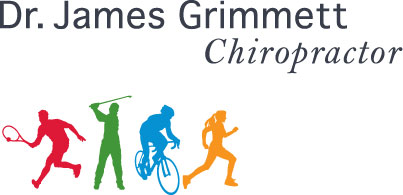Postural hygiene is really not a novel idea. Some Yoga, Tai Chi and exercise classes would be examples of this. And the simple yardstick to know that you are indeed benefiting from your corrective postural routine is from the good feeling experienced immediately post exercise.
As the dental community has so successfully established the practice of oral hygiene so too should postural correction become part of a daily routine. Given it’s positive attributes one might argue good posture is at least as important as good oral health.
Good posture is responsible not just for the obvious ease of standing, sitting and moving. It is important for proper breathing and digestion as well. Take digestion, there is solid research to show how poor posture is commonly related to GIRD (gastrointestinal reflux disorder).
Whether in sports to maximize performance and minimize injury or in aging gracefully good posture is at the core. In the sports world Roger Frederer is a fine example of this.
So what is good posture? Simply put this is when the bones that make up a joint are in maximal contact. The joints are optimally aligned or stacked so as to minimize the effort of countering gravity. Good posture is commonly described as, “feeling tall” or “feeling light”. The explanation for this ‘light’ or ‘tall’ feeling is that the many muscles and fascia responsible for posture are in harmony. That is, some muscles are not being over worked while others are not working enough. This would be the case with poor posture such as forward head carriage.
The DNS (dynamic neuromuscular stabilization) group based in Prague is significantly contributing to the world of corrective exercises. They are filling in some common gaps in ‘core exercises’. The goal of DNS exercises is targeted at maximizing one’s optimum posture.
DNS follows the fundamental physical developmental process of the infant through to 18 months. You might be hearing the buzz term ‘flow’. In DNS ‘flow’ classes the exercises strongly parallel the healthy infant from 3 months to 18 months. The classic physiological milestones being the roll, crawl and squat.
Obviously a 19 year old competitive racquet athlete’s corrective exercise program would be tailored differently than a 70 year old with a hip replacement. The young athlete’s exercises would likely include a form of a lunge and squat while the elderly person would likely be paralleling various 3 to 5 month positions of the baby.
Just like the developing infant will have postural limitations so too do many adults, especially if injured or in pain. Exercises that involve greater postural demand like the squat are only able to be performed properly starting around one year of age and in the athletic population where the squat is part of their training. The 6 month old and sedentary desk worker would not be able to do the squat for example.
The therapist, personal trainer or yoga instructor needs to tailor the postural exercises to the individual, especially with someone de-conditioned or injured. The exercises need to be challenging enough to strengthen the weak pattern but not much more. This can be a relatively fine line as too much is too much.
When someone is posturally weak with compensatory patterns it is easy for exercises to surpass what their posture system can handle. Unfortunately, when this happens posture is not improved and ultimately the exercises can end up reinforcing the very pattern you are trying to change.
Fortunately, as mentioned above correctly tailored postural exercises are reinforced by the ‘good’ feeling immediately following them. In time this good feeling should become more of the norm. And if in pain, less or no pain should be the outcome from the exercises.
When the complement of ‘you look taller’ comes unsolicited you know you are on the right road to better posture.
The basics of postural exercises are the focus of my weekly corrective exercise workshop.
